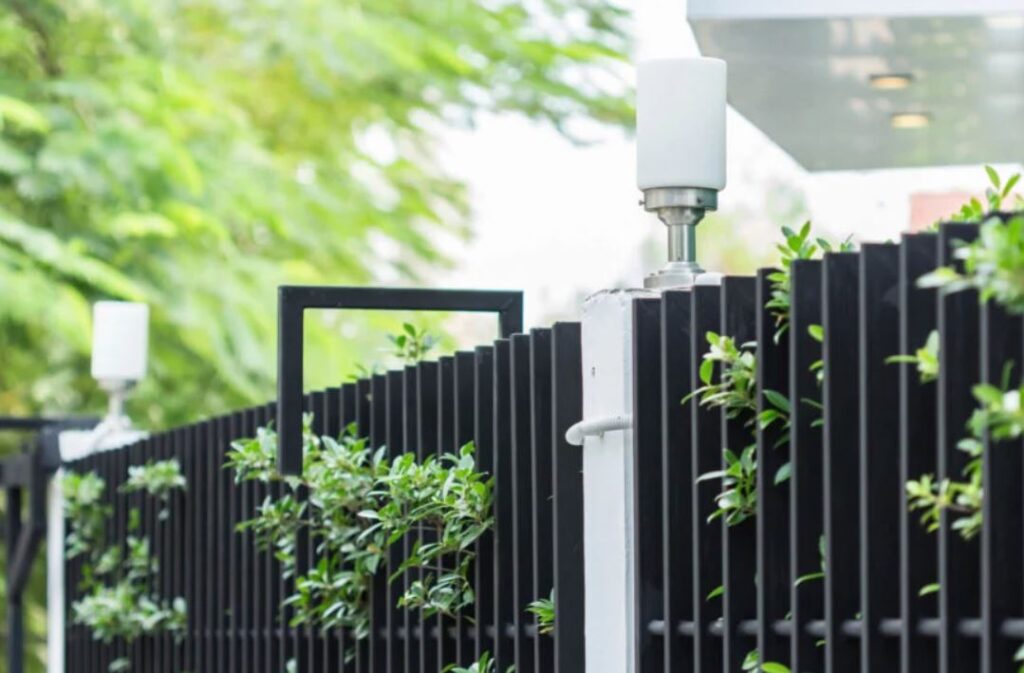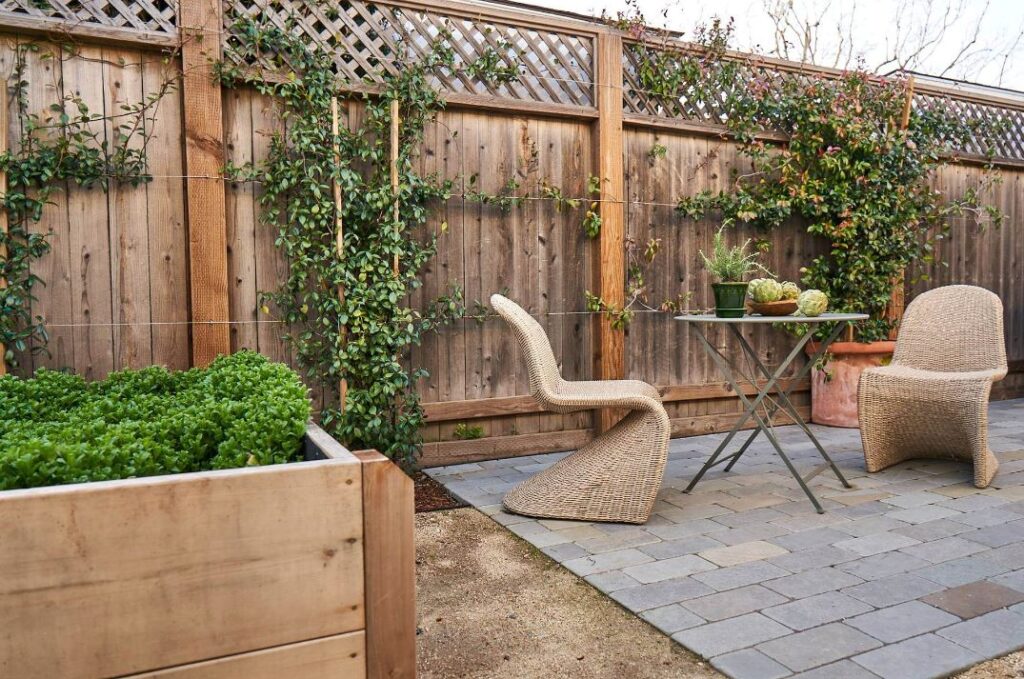Fences have long been a staple in landscapes, serving practical purposes such as marking boundaries and providing security. However, the role of fencing extends far beyond these conventional uses. When thoughtfully incorporated, fences can transform the aesthetics of an outdoor space, elevating its visual interest and appeal. This article delves into the multifaceted nature of fencing as a pivotal design element. We will explore the rich history of fencing, its evolution as a design feature, and the myriad of types available, from classic wood to modern composite.
The objective of this article is to shed light on how fences can serve functional needs and act as canvases for creativity, enabling homeowners and designers to infuse personality and style into any exterior setting. Whether you’re looking to redefine your garden, enhance privacy, or add a touch of artistic flair, this comprehensive guide offers insights and inspiration for using fences to create visually captivating landscapes. So, let’s embark on a journey to uncover the potential of fencing as a design element that marries form and function and explore the myriad of possibilities it opens up for creating spaces that resonate with charm and character.

Understanding the Basics
At its core, fencing encloses or divides an area, usually marking boundaries and preventing unwanted access. Traditionally, fences served primary purposes such as safeguarding property, protecting livestock, and ensuring privacy. However, as design philosophies evolved, so did the role of fences, transforming them into versatile elements that enhance visual aesthetics and complement architectural styles.
Fencing has undergone a significant transformation since its inception. In ancient times, fences were rudimentary structures built from materials like stone or wood, focusing on functionality. As civilizations advanced, the aesthetic aspect of fencing started to gain prominence. Renaissance gardens showcased intricate wrought-iron fences, while Victorian homes flaunted ornate wooden designs, reflecting societal values and artistic trends.
Types of Fences
- Wood
Wooden fences are timeless classics, offering warmth and natural beauty. They are versatile, suitable for various styles, from rustic to modern, and can be painted or stained for a customised look. - Metal
Metal fences, especially wrought iron and aluminium, are known for their durability and elegant designs. They are often used for decorative purposes, adding a touch of sophistication to properties. - Vinyl
Vinyl fences have gained popularity for their low maintenance and wide range of style options. Available in various colours and textures, they can mimic the look of wood or stone, providing design flexibility. - Composite
Composite fencing, made from a blend of wood and plastic, offers the best of both worlds— the natural appearance of wood and the longevity of plastic. It is an eco-friendly option that resists weathering and decay. - Others
Other fencing materials include bamboo, chain link, and glass, each with unique characteristics catering to specific needs and design preferences.
Aesthetic Appeal of Fencing
Fences need not be mere utilitarian structures; they can be masterpieces that elevate a property’s appeal. Balancing functionality and style is key. Consider the fence’s purpose—whether it’s for privacy, security, or decoration, and let this guide the choice of design, ensuring it complements the overall aesthetic of the space.
Colours and textures play a crucial role in defining a fence’s visual impact. Soft, natural hues can create a tranquil atmosphere, while bold colours make a statement. The texture adds depth and character, whether it’s untreated wood’s ruggedness or polished metal’s sleekness.
Customization is a gateway to creativity. Personalising fence designs allows homeowners to express their style and enhance the uniqueness of their property. From ornamental metalwork to bespoke wooden carvings, the possibilities are limitless.
Artistic elements such as murals, sculptures, or lighting can be integrated into fencing designs, transforming them into dynamic art installations. These additions bring a touch of whimsy and individuality, making the fence a focal point of the landscape.
Integration with Landscape
A well-designed fence can be a canvas that complements and enhances garden designs. Whether it’s framing picturesque flower beds, supporting climbing plants, or creating a backdrop for outdoor art, a fence contributes to the harmony and cohesiveness of the garden layout.
Fences can redefine outdoor spaces, creating intimate settings for relaxation or entertainment. By incorporating elements such as seating, planters, or pergolas, fences become an integral part of the outdoor living experience. Visit www.timberandfencingbrisbane.com to find the perfect fence for your yard.
Harmonising fences with natural surroundings fosters a sense of tranquillity and connection with the environment. Using natural materials, mimicking local textures, and incorporating native flora can seamlessly blend the built and the natural.
Different climates necessitate varied approaches to fencing design. Materials and finishes must be chosen with the local weather in mind, ensuring longevity and reducing maintenance. For instance, moisture-resistant materials are essential in humid climates, while UV-protective finishes are beneficial in sunny regions.
Adding Dimension and Defining Spaces
Fences serve as practical solutions for dividing outdoor areas into distinct zones. They can separate a vegetable garden from a play area, create a secluded nook for meditation, or define the boundaries of a patio, adding structure and organisation to the landscape.
Introducing vertical elements through fencing adds height and dimension, drawing the eye upwards and creating a sense of spaciousness. This is especially useful in smaller spaces, where clever design can make the area feel larger and more dynamic.
Fences can be used to play with perspectives and create illusions of depth. By manipulating lines and angles, fencing can lead the eye towards focal points, make spaces appear longer or wider, and introduce an element of surprise in the landscape design.
The approach to fencing differs in small and large spaces. In smaller areas, fences should optimise space, incorporate multifunctional features, and use design tricks to enlarge the perception of the area. In contrast, large spaces allow for grander designs, varied materials, and the integration of diverse landscape elements.
Enhancing Privacy and Security
The desire for private, tranquil spaces has never been more paramount in an increasingly interconnected world. Privacy is a cornerstone of outdoor design, enabling individuals to enjoy their spaces without the prying eyes of the outside world. Fences are crucial in delineating boundaries and fostering a sense of seclusion, making outdoor living more comfortable and enjoyable.

While aesthetics are important, the fundamental role of fences in providing security cannot be overlooked. Robust fencing acts as a deterrent to intruders, safeguarding both property and inhabitants. Incorporating features such as locks, alarms, and security cameras further enhances the protective function of fences.
Creating an open and secluded space can be challenging but rewarding. Fences can be designed with varying levels of opacity, height, and spacing, allowing for controlled views and interactions with the surroundings, while maintaining a sense of enclosure and safety.
Greenery is a natural ally in enhancing privacy. Planting trees, shrubs, or vines along fences boosts the aesthetic appeal and adds an additional layer of seclusion, softening the boundaries between private and public spaces.
Tips and Tricks for DIY Fencing Design
Embarking on a DIY fencing project starts with a thorough assessment of your needs and preferences. Define the fence’s purpose, whether for privacy, security, aesthetics, or a combination thereof, and consider the style that best complements your property and personal taste.
Selecting appropriate materials is pivotal. Consider factors such as climate, durability, maintenance, and budget. The style should align with the overall design theme of your property, whether it’s modern, rustic, traditional, or eclectic.
Proper installation is key to the longevity and effectiveness of the fence. Preparing the ground, ensuring accurate measurements, and following installation guidelines are essential steps. Seeking professional advice or assistance can be beneficial, especially for complex designs.
Regular maintenance preserves the beauty and functionality of your fence. Protecting the materials against weather elements, repairing damages promptly, and refreshing finishes are part of the upkeep that will keep your fence standing strong and looking great.
Future Trends in Fencing Design
Sustainability is a guiding principle in contemporary design. Eco-friendly materials, such as bamboo, recycled plastic, and composite, are gaining traction. These options reduce environmental impact while delivering durability and style.
Advancements in technology are reshaping fencing design. Smart fences equipped with sensors, alarms, and connectivity features are emerging, offering enhanced security and convenience. Innovations in materials and manufacturing processes are also expanding design possibilities.
The design landscape is ever-evolving, with new styles and materials continually emerging. From minimalist designs to bold artistic expressions, unconventional materials to hybrid solutions, the future of fencing design is diverse and exciting.
Personalization is at the forefront of design trends. Customizable options, bespoke designs, and DIY solutions are increasingly popular, allowing homeowners to express their individuality and create spaces that reflect their personality.
Fencing has evolved from a basic utilitarian structure to a significant design element that offers a blend of aesthetics, privacy, and security. The creative use of fences can significantly enhance outdoor spaces’ visual interest and functionality. By understanding design principles, exploring innovative trends, and personalising according to individual preferences, homeowners and designers alike can elevate landscapes to new heights. The journey into fencing design is exciting, filled with endless possibilities and opportunities for expression. So, why wait? Embrace the potential of fencing as a design element and experiment with its myriad possibilities in your own spaces. The canvas is yours to paint!